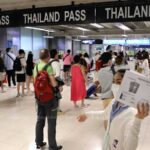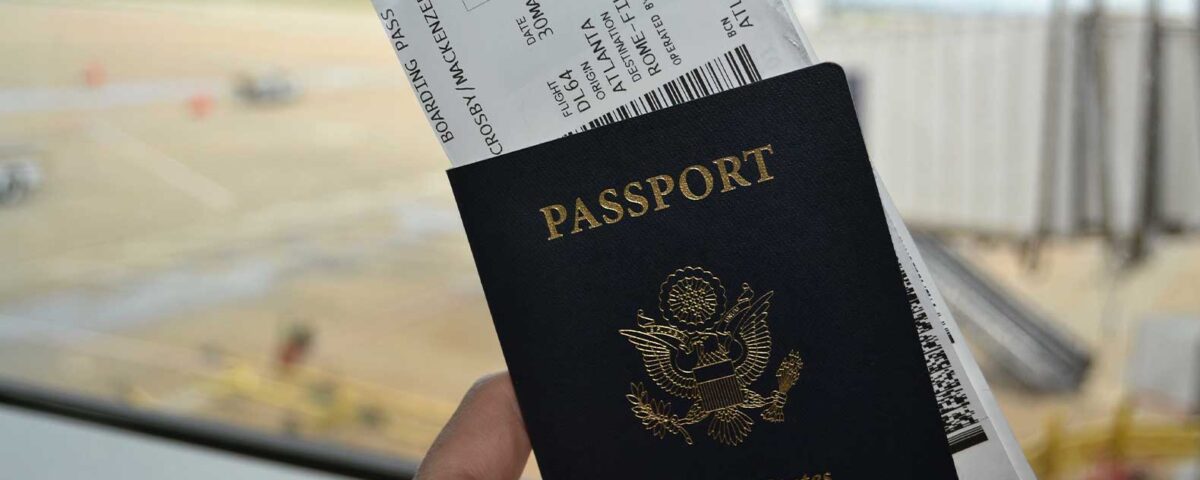
How to Budget for Your 2025 Thailand Trip: Costs, Tips, and Money-Saving Hacks
10/04/2025
I Forgot to Fill TDAC: What to Do at Immigration
18/04/2025Thailand’s visa policies balance welcoming tourists with immigration oversight. In 2025, entry options include visa exemptions, VOA, and pre-arranged visas, tailored to nationality and travel purpose. A key change is the Electronic Travel Authorization (ETA), fully implemented by June 2025, requiring visa-exempt travelers to register online before arrival. Additionally, the TDAC, replacing the paper-based TM6 form, becomes mandatory for all foreign visitors from May 1, 2025, streamlining immigration through digital submission.
Passports must have at least six months’ validity upon entry (30 days for VOA) and one blank page. Overstaying incurs a 500 THB daily fine, up to 20,000 THB, and may lead to detention or re-entry bans. Let’s explore the options to ensure your Thailand trip starts smoothly.
Visa Exemption: Who Can Enter Without a Visa
As of July 15, 2024, Thailand grants visa exemptions to 93 countries and territories, allowing a 60-day stay for tourism or short-term business purposes, extendable by 30 days for 1,900 THB at a Thai Immigration Office. Eligible travelers receive a visa-exempt stamp at immigration checkpoints, such as airports in Bangkok, Phuket, or Chiang Mai, or at land/sea borders. Most nationalities are limited to two land/sea entries per calendar year, except Malaysians, who enjoy unlimited land entries.
Eligible Regions for Visa Exemption
To keep things concise, countries are grouped by region:
- Asia-Pacific (26): Covers nations like Australia, Japan, South Korea, Singapore, Malaysia, Indonesia, Philippines, Vietnam, Cambodia, Laos, Brunei, Hong Kong, Macau, Taiwan, New Zealand, Mongolia, Myanmar, India, China, Sri Lanka, Kazakhstan, Uzbekistan, Maldives, Fiji, Bhutan, Timor-Leste. Most receive 60 days; Cambodia gets 14 days, while Hong Kong, Macau, Mongolia, Myanmar, Vietnam, and Laos get 30 days.
- Europe (44): Includes the United Kingdom, Germany, France, Italy, Spain, Netherlands, Switzerland, Sweden, Norway, Denmark, Finland, Austria, Belgium, Ireland, Portugal, Poland, Czech Republic, Hungary, Greece, Romania, Bulgaria, Croatia, Cyprus, Estonia, Latvia, Lithuania, Malta, Slovakia, Slovenia, Albania, Andorra, Georgia, Iceland, Kosovo, Liechtenstein, Luxembourg, Monaco, Russia, San Marino, Serbia, Turkey, Ukraine, Vatican City. Russia is limited to 30 days.
- Americas (14): Encompasses the United States, Canada, Brazil, Argentina, Chile, Peru, Mexico, Colombia, Ecuador, Guatemala, Panama, Uruguay, Dominica, Dominican Republic. Brazil, Argentina, Chile, and Peru enjoy 90 days due to bilateral agreements.
- Middle East (7): Bahrain, Kuwait, Oman, Qatar, Saudi Arabia, United Arab Emirates, Israel.
- Africa (2): South Africa, Morocco.
Visa Exemption Requirements
- Passport valid for at least six months (temporary or emergency passports may be assessed case-by-case).
- Proof of onward travel, such as a confirmed ticket exiting Thailand within 60 days.
- Proof of sufficient funds: 10,000 THB per person or 20,000 THB per family, shown via cash or bank statement.
- Proof of accommodation, like a hotel booking or host address.
- From June 2025, visa-exempt travelers must complete a free ETA registration online before arrival.
This option suits tourists, family visitors, or those attending short business meetings. For urgent work, a separate Urgent Work Permit (UWP) is required, valid for 15 days and extendable once.
Visa on Arrival (VOA): Short-Term Entry Option
The Visa on Arrival (VOA) program allows citizens from 31 countries and territories to obtain a 15-day visa at Thai immigration checkpoints, primarily for tourism. The VOA is non-extendable except in rare cases, such as medical emergencies. The e-VOA system lets travelers apply online in advance, reducing wait times at major entry points like Suvarnabhumi, Don Mueang, or Phuket airports.
VOA-Eligible Regions
Grouped by region for clarity:
- Asia (10): Armenia, Bhutan, China, Fiji, India, Maldives, Papua New Guinea, Taiwan, Uzbekistan, Vanuatu.
- Europe (15): Andorra, Bulgaria, Cyprus, Czech Republic, Estonia, Hungary, Latvia, Lithuania, Malta, Romania, San Marino, Serbia, Slovakia, Slovenia, Ukraine.
- Americas (5): Bolivia, Costa Rica, Paraguay, Venezuela, El Salvador.
- Africa (1): Ethiopia.
Note: Countries like China, India, and Taiwan are visa-exempt for 60 days for tourism, so VOA applies only in specific non-tourism cases or for travelers needing quick entry without prior registration. Always verify your eligibility to choose the best option.
VOA Requirements
- Passport valid for at least 30 days from entry with one blank page.
- Completed VOA application form, available at checkpoints or online for e-VOA.
- One recent passport-sized photo (4×6 cm).
- Proof of onward travel, such as a confirmed ticket exiting within 15 days.
- Proof of funds: 10,000 THB per person or 20,000 THB per family.
- Proof of accommodation, like a hotel reservation.
- Non-refundable fee of 2,000 THB (approximately $60 USD), payable in cash in Thai Baht.
The VOA is ideal for spontaneous short trips, but visa-exempt entries are often preferable for eligible nationalities due to longer stays and no fees.
Pre-Arranged Visas: When You Need to Apply Early
Travelers from countries not covered by visa exemptions or VOA must obtain a visa before arrival from a Royal Thai Embassy, Consulate, or the official e-Visa system, fully implemented by January 2025. This requirement applies to many African, Middle Eastern, and some Asian nations, including:
- Africa: Nigeria, Kenya, Ghana, Algeria, Egypt, Libya, Sudan, Zimbabwe, Angola, Cameroon.
- Asia: Afghanistan, Bangladesh, Iran, Iraq, Nepal, North Korea, Pakistan, Syria, Yemen.
- Europe: Bosnia and Herzegovina, Moldova, North Macedonia.
- Middle East: Jordan, Lebanon, Palestine.
- Others: Cuba, Haiti.
Requirements for Pre-Arranged Visas
- Passport valid for at least six months with two blank pages.
- Completed visa application form, submitted online or in person.
- Two passport-sized photos (4×6 cm).
- Proof of funds, typically 10,000–20,000 THB, depending on visa type.
- Travel itinerary and accommodation details.
- Purpose-specific documents, such as a business invitation letter, school enrollment, or medical appointment.
- Visa fee, varying by type and paid at the embassy or online.
Processing typically takes 3–15 business days, with e-Visa applications offering a more convenient option. These visas cater to diverse purposes, from tourism to work or study, and are tailored to the traveler’s needs.
Thailand Visa Types Explained
Thailand offers a range of visas to suit different travel goals, from brief vacations to long-term residency. Below, we detail each type to help you choose the right one.
Tourist Visa (TR)
Designed for leisure travelers, medical tourists, or those visiting friends and family.
- Single-Entry Tourist Visa:
- Validity: 3 months from issuance.
- Stay: Up to 60 days, extendable by 30 days for 1,900 THB.
- Requirements:
- Passport valid for six months or more.
- One passport-sized photo (4×6 cm).
- Proof of funds: 10,000 THB per person or 20,000 THB per family.
- Confirmed return ticket exiting within 60 days.
- Proof of accommodation, such as a hotel booking.
- Application: Through a Thai Embassy, Consulate, or e-Visa system.
- Purpose: Tourism, medical visits, family reunions.
- Multiple-Entry Tourist Visa (METV):
- Validity: 6 months from issuance.
- Stay: 60 days per entry, extendable by 30 days per entry.
- Requirements: Same as single-entry, plus evidence of frequent travel or prior Thailand visits.
- Purpose: Repeated short-term tourism.
The Tourist Visa is perfect for stays longer than visa-exempt periods but not exceeding 90 days per entry.
Visa on Arrival (VOA)
As described earlier, the VOA allows a 15-day stay for tourism, applied for at immigration upon arrival. It’s non-extendable except in emergencies, and the e-VOA option simplifies the process for eligible travelers.
Non-Immigrant Visas
These visas cater to specific purposes beyond tourism, with several subcategories:
- Non-Immigrant B (Business/Work):
- Validity: 3 months (single-entry) or 1 year (multiple-entry).
- Stay: Up to 90 days per entry.
- Requirements:
- Work permit (if employed) or invitation letter from a Thai company.
- Company documents, such as a business license.
- Proof of qualifications, like a degree or work experience.
- Purpose: Business meetings, employment, teaching, technical work.
- Extension: Possible with a work permit or company sponsorship.
- Non-Immigrant O (Other):
- Subtypes:
- O (Marriage): For spouses of Thai nationals.
- O (Dependent): For dependents of Non-Immigrant visa holders.
- O (Volunteer): For approved volunteer work with registered organizations.
- Validity: 3 months (single) or 1 year (multiple).
- Stay: 90 days per entry, extendable.
- Requirements: Marriage certificate, proof of relationship, or volunteer organization letter.
- Subtypes:
- Non-Immigrant OA/OX (Retirement):
- OA (Short-Term Retirement):
- For those aged 50 or older.
- Validity: 1 year.
- Stay: 90 days per entry, extendable.
- Requires 800,000 THB in a Thai bank account or 65,000 THB monthly income.
- OX (Long-Term Retirement):
- Age 50+, validity 5–10 years.
- Same financial requirements as OA.
- Allows multiple entries for long-term stays.
- Purpose: Retirement in Thailand.
- OA (Short-Term Retirement):
- Non-Immigrant ED (Education):
- Validity: 3 months or 1 year.
- Stay: 90 days per entry, extendable.
- Requirements: Acceptance letter from a recognized Thai educational institution.
- Purpose: Study, internships, language courses, academic programs.
- Non-Immigrant M (Media):
- For journalists, filmmakers, or media professionals working in Thailand.
- Requires media accreditation and sponsorship from a Thai organization.
Non-Immigrant Visas are more complex, often requiring Thai sponsorship and detailed documentation, but they offer flexibility for longer or specialized stays.
Destination Thailand Visa (DTV)
Introduced in 2024, the DTV targets digital nomads, remote workers, and those pursuing cultural activities like Muay Thai training or Thai cooking classes.
- Validity: 5 years.
- Stay: Up to 180 days per entry, extendable by another 180 days.
- Requirements:
- Proof of remote employment or enrollment in a cultural/educational course.
- Financial proof of at least 500,000 THB.
- Passport valid for six months or more.
- Application: Via e-Visa system or Thai Embassy.
- Purpose: Remote work, cultural immersion, medical treatment.
The DTV is ideal for those blending work and lifestyle in Thailand, offering long-term flexibility with multiple entries.
Elite Visa
The Thailand Elite Visa is a premium residency program for affluent travelers seeking convenience and exclusivity.
- Validity: 5, 10, or 20 years, depending on the membership package.
- Stay: Up to 1 year per entry, renewable within the visa’s validity.
- Requirements:
- Clean criminal record.
- Passport valid for at least six months.
- No financial proof required, as the program is fee-based.
- Benefits:
- VIP airport services, including fast-track immigration.
- Concierge support for bookings and lifestyle needs.
- Discounts on hotels, golf courses, spas, and more.
- Purpose: Long-term tourism and leisure.
The Elite Visa suits high-net-worth individuals who value ease and perks without frequent renewals.
Long-Term Resident (LTR) Visa
The LTR Visa targets investors, skilled professionals, and retirees aiming for extended stays in Thailand.
- Validity: 10 years, with a 5-year renewable entry permit.
- Stay: Up to 1 year per entry.
- Requirements:
- Investment of at least $1 million USD in Thailand, or
- Employment with a qualifying company (e.g., tech, innovation sectors), or
- Retirement with an annual income of 80,000 USD plus a 40,000 USD investment.
- Benefits:
- Reduced tax obligations.
- Fast-track immigration services.
- Annual reporting instead of frequent 90-day checks.
- Purpose: Investment, professional work, retirement.
The LTR Visa is designed for those establishing deep roots in Thailand, offering stability and economic incentives.
Visa Costs: What to Budget
Visa fees vary by type, entry mode, and application method. Below are approximate costs for 2025, based on current data and converted to USD (subject to exchange rate fluctuations):
- Visa on Arrival (VOA):
- 2,000 THB (approximately $60 USD), payable in cash at immigration.
- e-VOA processing: Additional $13–$75 USD, depending on service speed.
- Tourist Visa (TR):
- Single-Entry: $40 USD.
- Multiple-Entry (METV): $200 USD.
- Extension (30 days): 1,900 THB (approximately $57 USD).
- Non-Immigrant Visas:
- Single-Entry (B, O, ED, etc.): $80 USD.
- Multiple-Entry (B, O): $200–$400 USD.
- Retirement (OA): $80 USD; (OX): $200 USD.
- Extension: 1,900 THB (approximately $57 USD) per 90 days.
- Destination Thailand Visa (DTV):
- $400 USD (one-time fee for 5 years).
- Elite Visa:
- 5 years: Approximately $25,000 USD.
- 10 years: Approximately $35,000 USD.
- 20 years: Approximately $60,000 USD.
- Long-Term Resident (LTR) Visa:
- $1,500 USD application fee, excluding investment requirements.
Additional expenses may include document notarization, translations, or courier services for embassy applications. Always confirm fees with the Thai Embassy or e-Visa system, as rates can change.
Thailand Digital Arrival Card (TDAC): Mandatory from May 1, 2025
Starting May 1, 2025, all foreign nationals entering Thailand by air, land, or sea must complete the Thailand Digital Arrival Card (TDAC) online within 72 hours before arrival. This digital form replaces the paper-based TM6, enhancing immigration efficiency and security.
What is the TDAC?
The TDAC collects essential information:
- Personal Details: Full name, nationality, passport number, visa status (if applicable).
- Travel Details: Arrival date, mode of transportation, purpose of visit, address in Thailand.
- Health Information: Countries visited in the prior 14 days.
How to Apply for the TDAC
- Visit the official TDAC portal.
- Register and input personal, travel, and health details.
- Review and submit the form.
- Receive a PDF TDAC with a QR code via email (print or save digitally).
- Present the QR code at immigration checkpoints.
Who Needs the TDAC?
- All foreign travelers, regardless of entry type (visa-exempt, VOA, or pre-arranged visa).
- Exceptions:
- Thai passport holders.
- Transit passengers not clearing immigration.
- Holders of specific border passes at designated crossings.
Why the TDAC Matters
The TDAC reduces paperwork, speeds up immigration processing, and helps Thai authorities track visitors for security and public health purposes. Failure to submit the TDAC may result in entry delays or fines. At tdac.info, we offer step-by-step support to ensure you meet this requirement effortlessly.
Pro Tips for Visa and TDAC Success
- Plan Ahead: Apply for visas 1–2 months in advance and complete the TDAC within 72 hours before arrival.
- Verify Passport: Ensure at least six months’ validity (30 days for VOA) and blank pages.
- Use Official Channels: Apply through trusted Thai immigration portals for visas and TDAC.
- Avoid Overstaying: Fines of 500 THB per day (max 20,000 THB) or detention apply.
- Keep Copies: Carry digital or printed copies of your visa, TDAC, and travel documents.
- Stay Updated: Visa and TDAC rules may evolve; check official sources or consult tdac.info.
- Seek Expert Help: For complex visas like DTV or LTR, professional guidance prevents errors.
These tips ensure compliance and a stress-free entry, letting you focus on enjoying Thailand’s wonders.
Plan Your Trip with tdac.info
Navigating Thailand’s visa requirements and the new Thailand Digital Arrival Card (effective May 1, 2025) can feel overwhelming, but tdac.info makes it simple. Our expert team provides personalized assistance with visa applications, TDAC registration, and travel planning, ensuring you meet all 2025 regulations. Whether you’re leveraging a visa exemption, applying for a VOA, or exploring long-term options like the DTV or Elite Visa, we’ve got you covered. Visit tdac.info to start your Thai adventure with confidence!




